
The Heritage Flight Museum is home to exhibits and displays that tell the stories of spaceflight and military aviation. As the Museum evolves and our collection grows, our exhibits will also change and expand. Be sure to check back frequently!
If you are interested in donating artifacts, images, models or more – or if you would like to discuss possible future exhibits – please contact our collections department at archive@heritageflight.org or give us a call at (360)424-5151. To read more about donations, please see our “Donate” page.

Aircraft and Vehicles
The Heritage Flight Museum houses a growing collection of historic military aircraft and vehicles. Most of the Museum’s aircraft are fully functional, maintained by our skilled mechanics and frequently flown by our experienced pilots. The best opportunity to see our airplanes in action is during our monthly Fly Days from April through September. The rest of the time, they are on display in our hangars, where visitors can get an up-close look and learn about their history.
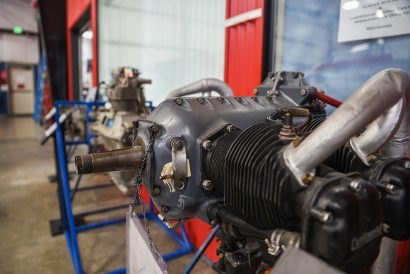
Aircraft Engineering and The Mechanic’s Corner
It takes many hours of intricate work to keep the Museum’s collection of historic aircraft safe, maintained and functioning. The expert, dedicated mechanics at HFM work hard to keep the aircraft and vehicles in their best shape. This work is conducted on site in our hangars, giving visitors a chance to see what makes warbirds tick. Our collection of aircraft engines also provides an exciting peek into the inner workings of aviation.
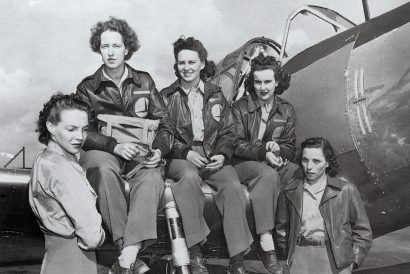
Cornelia Fort and “The Pearl”
On a Sunday that started like many others, Cornelia Fort was conducting a flight lesson in the skies over beautiful Pearl Harbor. The date was December 7, 1941. As the infamous Japanese attack began, she took control of the Interstate Cadet from her student to avoid being rammed by a hostile aircraft. She was able to land the Cadet and make it to safety with her student after avoiding both air-to-air and air-to-ground strafing attacks by the Japanese. Fort and her student survived a day that claimed the lives of over 2,400 people and propelled the US into World War II. The Interstate Cadet that survived the attack on Pearl Harbor now resides in the Heritage Flight Museum’s hangars. More information can be found at lostaviatorsofpearlharbor.org.

Earthrise Gallery
In spring of 2022, HFM opened the Earthrise Gallery, an exhibit that walks visitors through mankind’s first trip to the Moon. The successful Apollo 8 mission set many firsts in the history of human spaceflight. Frank Borman, James Lovell and William Anders became the first humans to leave Earth’s gravity and enter the gravity of another celestial body. They were the first humans to see the far side of the moon with their own eyes. The famous “Earthrise” photograph taken by William Anders later became known as one of Life Magazine’s “100 most influential photographs.” Six display units tell the Apollo 8 story from its inception to its lasting legacy. Video displays recreate the awesome launch of the Saturn V rocket, the crew’s life aboard the Command Module and the famous first Christmas Eve broadcast from the Moon. Artifacts on display include a piece of the Moon encased in NASA’s Ambassador of Exploration Award and presented to HFM founder William Anders.
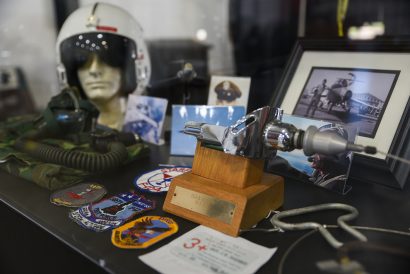
Military Artifacts
In addition to military aircraft, the Heritage Flight Museum proudly houses artifacts from many service men and women. The Museum offers opportunities to learn about the hard-working crews who operated these historic aircraft through artifacts, stories and presentations.

Military Uniforms
Heritage Flight Museum is dedicated to honoring and preserving the contributions made by crews that operated historic military aircraft. Uniforms from various branches of military service, through multiple generations, are on display. Visitors have the opportunity to see how uniforms have evolved over time to meet the changing demands of military aviation. From dress uniforms to flight suits and helmets, there is a wide variety of gear to look at and learn about.
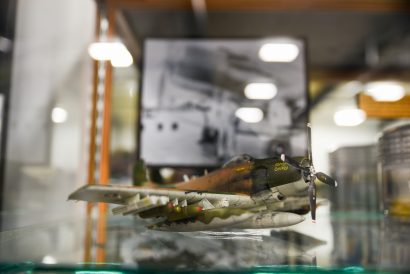
Skyraiders and “Sandy” pilots in Vietnam
The Douglas A-1 Skyraider was a long-serving, single-seat, propeller-driven attack aircraft. The bulk of its service took place between 1940 and 1980, during both the Korean and Vietnam wars. Skyraiders that accompanied HH-3E “Jolly Green Giant” rescue helicopters and provided air support for combat search-and-rescue missions were given the callsign “Sandy”. Heritage Flight Museum is proud to exhibit the artifacts and stories of Skyraider pilots along with our early-1950’s Skyraider, “The Proud American”.
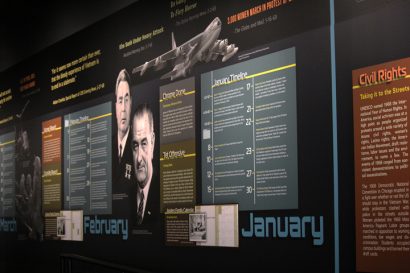
The ’68 Experience
The year leading up to the launch of Apollo 8 was one of the most tumultuous years in American history. The ’68 Experience offers a deeper understanding of the historic space mission within the context of its era. This exhibit leads visitors through the Cold War, Vietnam War, Civil Rights Movement and Space Race. It follows the milestones of 1968 through world headlines and a detailed timeline of major events. A personal calendar that belonged to Valerie Anders tracks the activities of the Anders family throughout the year, up to and including the departure of her husband, Apollo 8 astronaut William Anders, on his voyage to the Moon.
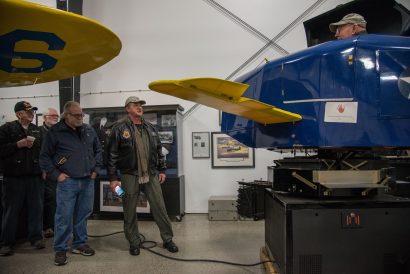
Training to Fly
Military aviators go through years of intense training to be able to fly worldwide aerial missions. Early training was conducted without the use of computers. In the early 1930s, the Link Flight Trainer was pioneered by Edwin Link, based on the vacuum technology that operated player pianos and organs. During World War II, over 10,000 trainers of this type were used to train more than 500,000 pilots. The Link Trainer has been designated as a Historic Mechanical Engineering Landmark by the American Society of Mechanical Engineers.

WAFS, WFTD, WASP
Established in 1942 during WWII to free male pilots for combat positions, two civilian flying programs were created for women, the Women’s Auxiliary Ferrying Squadron (WAFS) and the Women’s Flying Training Detachment (WFTD). The two programs merged into a single program, the Women’s Airforce Service Pilots (WASP), in 1943. Their patch design featured a female gremlin named Fifinella that was inspired by Roald Dahl’s story The Gremlins and drawn by Walt Disney.

